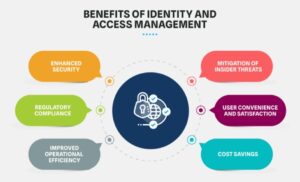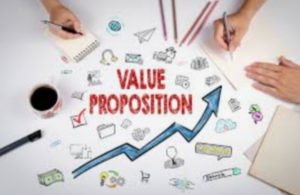
I’m happy to share delving deeper into a particular area of AI implementation with my current client sales team workflows. Althpugh we are currently using most of AI tools already listed below, its important that we are always keeping our pulse and fielding calls from solicitors or SDR’s/BDR’s to always know the latest and greatest tools in the marketplace that won’t dispute the tech stack or cost our current infrastructure. Here are a few of implementations I’ve undertaken into my daily workflows.:
* Lead Generation and Scoring: AI has identified potential customers, prioritized leads based on their likelihood to convert, and automated lead nurturing processes.
* Sales Forecasting: Using AI to predict future sales performance, identifiying trends, and optimizing sales strategies.
* Personalized Customer Experiences: AI has enabled me personalized interactions with customers which is not only a great testimonial to the team and businees/ product unit but makes new customer journey much easier, tailoring recommendations and offerings based on their preferences and behavior.
* Sales Enablement: Leveraging AI has provided the sales teams with real-time insights, coaching, and supporting improving their performance.
* Customer Relationship Management (CRM) Optimization: Most CRM’s we use like Salesforce, HubSpot, Salesloft have built in AI and are using AI which has enhanced our CRM systems, automated tasks, and gained deeper insights into customer interactions.
Is there a particular area that interests you the most? Or perhaps you have a specific question or scenario related to AI in sales that you’d like to discuss? Here are some team ways we’ve implemented AI into sales and teams workflows. Check them out!
As sales organizations face increasing pressure to deliver more personalized, efficient, and data-driven experiences, many VPs of Sales are turning to AI and generative technologies to enhance workflows and drive growth. This article explores how AI tools are transforming sales processes and workflows, along with practical tools to help teams adopt and succeed with these innovations.
1. Sales Forecasting and Predictive Analytics
• AI tools analyze historical sales data, customer behavior, and market trends to predict future sales opportunities. This input has helped my client VPs of Sales make more accurate forecasts, save time, optimize inventory, and allocate resources effectively.
• Predictive analytics allowed the Account Executives and Account Managers to focus on building sales pipelines and sales funnel, and leads most likely to convert, shortening the sales cycle and improving conversion rates.
Best Tools:
• Gong.io: Provides AI-driven insights into my deals, pipeline health, and forecast accuracy.
• Clari: Helps my sales teams predict future performance and focus on high-priority opportunities through real-time forecasting insights.
Team Involvement:
• Sales Teams: Reps now can prioritize the best leads based on AI-generated predictions, leading to improved focus and productivity.
• Sales Managers: Gain visibility into pipeline health, allowing for better decision-making and resource allocation.
2. Personalization of Customer Interactions:
• Generative AI has created hyper-personalized content for my teams and customers, both email campaigns, follow-up messages, and tailored product recommendations.
• AI-driven customer segmentation allows my Account Executives and Account Managers to provide more relevant solutions based on individual customer needs and buying behavior, increasing satisfaction and loyalty.
Best Tools:
• HubSpot CRM: AI-powered segmentation and personalized messaging at scale has helped the business improve our customer relationships, boost sales, and streamline their operations.
• Salesforce Einstein: Using AI to predict the best times to engage with customers and tailor interactions has improved customer satisfaction, increased efficiency, and drives better business outcomes.
Team Involvement:
• Marketing Teams: Collaborating with sales to ensure AI-generated messages are on-brand and tailored to customer segments.
• Sales Teams: Focused on closing deals with more targeted, personalized follow-ups.
3. AI-Powered Sales Reps:
• AI virtual assistants handling routine tasks like scheduling in-bound call meetings immediately, data entry, and answering basic sales teams and customer queries, freeing sales reps to focus on higher-value tasks is a trial-an-error approach I am taking so as not to compromise the customer experience with a robot.
• AI chatbots providing 24/7 support for customer inquiries, helping to nurture leads and providing quick answers without human intervention as a possible solution to complement busy times only.
Best Tools:
• Drift: An AI-driven chatbot that engages leads on your website 24/7 has proven to offer best engagements with intelligent conversations.
• Conversica: AI sales assistants that can transparently autonomously engage prospects via email, handing off qualified leads to human reps.
Team Involvement:
• Sales Development Teams: Trying to offload repetitive tasks such as initial outreach and lead qualification to AI.
• Customer Support: Working in tandem with AI assistants to handle more complex inquiries.
4. Lead Scoring and Qualification:
• Machine learning models automatically score leads based on behavioral data, helping sales teams prioritize high-quality prospects. This increases the likelihood of conversion while optimizing the sales funnel.
• AI also helps automate qualification processes, allowing reps to focus on the leads most likely to generate revenue.
Best Tools:
• ZoomInfo: Uses AI to identify and prioritize high-value leads through predictive scoring.
• Marketo: AI-powered lead scoring to automatically rank prospects based on their likelihood to convert.
Team Involvement:
• Sales Reps: Focus on the highest-value leads, reducing time spent on low-probability deals.
• Marketing Teams: Work closely with sales to ensure scoring models align with business goals and customer behavior.
5. Content and Proposal Generation
• Generative AI tools like ChatGPT or Jasper are used to create sales presentations, proposals, product documentation, and marketing content faster and more effectively.
• Automation of document generation improves workflow efficiency and ensures brand consistency, allowing sales reps to focus more on building relationships with clients.
Best Tools:
• Jasper: A generative AI tool that creates sales emails, proposals, and marketing content.
• Tact.ai: An AI-powered personal assistant for generating and organizing client-facing materials.
Team Involvement:
• Content Creation Teams: Collaborate with AI to generate templates, freeing up time for more creative, high-level tasks.
• Sales Reps: Use AI-generated content to respond faster and more consistently to client requests.
6. Performance Tracking and Coaching:
• AI-based platforms track sales rep performance in real time, providing insights into areas for improvement. These platforms can recommend specific actions to improve close rates, communication styles, or negotiation strategies.
• Conversational AI analyzes sales calls and interactions to provide feedback on tone, messaging, and engagement, helping reps refine their approach.
Best Tools:
• Chorus.ai: Analyzes sales calls using AI to provide actionable feedback on performance.
• Salesloft: AI-powered analytics to help managers understand rep performance and coaching opportunities.
Team Involvement:
•¤Sales Coaches/Managers: Use AI-generated feedback to tailor coaching efforts and improve rep performance.
• Sales Reps: Benefit from personalized feedback that can improve communication and closing skills.
7. Customer Retention and Churn Reduction
• AI-driven customer insights help sales teams identify potential churn risks and suggest proactive steps to retain clients.
• Sentiment analysis tools assess customer satisfaction and feedback, allowing for early intervention before dissatisfaction leads to lost business.
Best Tools:
• Totango: Uses AI to predict and address customer churn risks by analyzing engagement data.
• Zendesk: AI-based customer support tools help keep clients satisfied and engaged.
Team Involvement:
• Customer Success Teams: Proactively address potential churn risks based on AI insights.
• Sales Teams: Stay informed of at-risk customers and tailor outreach to retain them.
8. Sales Process Automation:
• Automation tools streamline order processing, billing, and contract management, reducing manual errors and speeding up sales cycles.
• AI-driven CRM systems integrate data from various sources, providing a 360-degree view of customers and automating follow-ups and next steps.
Best Tools:
• Outreach.io: Automates follow-ups, meeting scheduling, and other repetitive sales tasks using AI.
• PandaDoc: AI-powered document automation for creating, sending, and managing contracts.
Team Involvement:
• Sales Operations Teams: Work to implement AI automation across the sales process, ensuring smooth workflows.
• Sales Reps: Focus on high-impact activities like relationship-building while AI handles routine tasks.
9. Market and Competitor Insights
• AI tools continuously monitor the competitive landscape, identifying trends, shifts in customer preferences, and emerging threats. VPs of Sales use this information to adjust their strategies and capitalize on opportunities.
Best Tools:
• Crimson Hexagon: AI-powered social listening tool that helps sales teams track market trends and competitor activity.
• InsideView: Provides competitive intelligence and industry insights using AI-driven data analysis.
Team Involvement:
• Market Intelligence Teams: Use AI to track industry trends and adjust sales strategies accordingly.
• Sales Teams: Stay informed of competitive shifts and refine their approaches based on data.
10. Adaptive Pricing and Dynamic Discounts:
• AI-powered pricing engines can adjust prices and discounts in real time based on market conditions, inventory levels, and customer demand. This helps to protect margins while staying competitive.
Best Tools:
• PROS: AI-powered dynamic pricing tools that optimize price points based on real-time data.
• Zilliant: Uses AI to adjust pricing strategies in response to changing market conditions.
Team Involvement:
• Pricing Teams: Collaborate with AI tools to develop more dynamic, competitive pricing models.
• Sales Teams: Use AI-driven pricing recommendations to close deals faster while maintaining margins.
11. Scalability and Cost Efficiency:
• AI tools allow sales organizations to scale quickly without needing a proportional increase in headcount. Automation and machine learning models take over routine tasks, allowing for cost-effective expansion.
Conclusion
Integrating AI across sales organizations is not just about adopting new technologies; it requires team collaboration and alignment across departments. With the right tools in place, VPs of Sales will improve devision-making, protect their business from disruption, empower their teams to work more efficiently, serve customers better whilst strengthening customer relationships, and ultimately increase profits while protecting the business in a competitive landscape.






